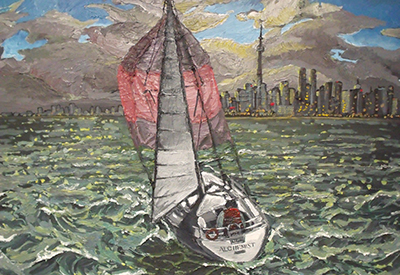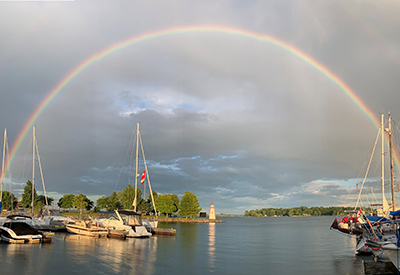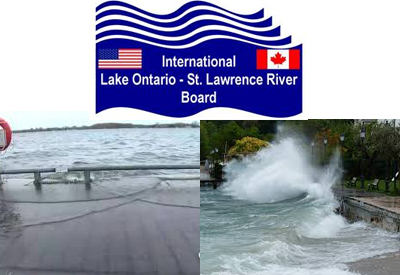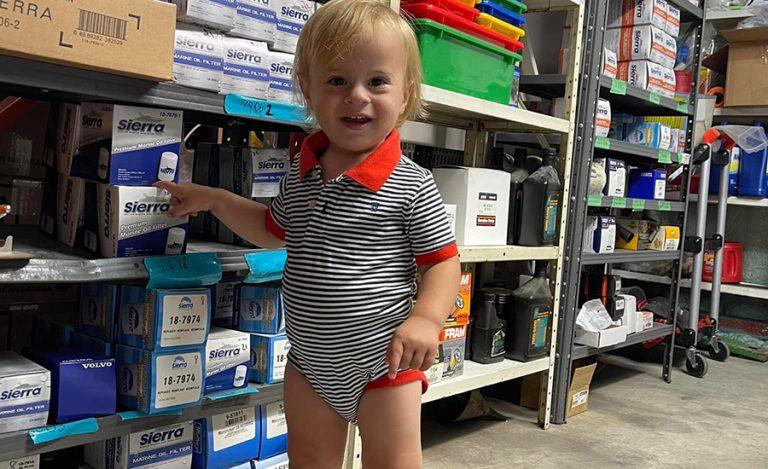Spinnaker Techniques for C&C 29 Mk 2 – Alchemist 4-Person Team Launching, Gybing, Dousing, Re-Launching

July 12, 2018
Credit: Thanks to Shirley Ander who commissioned this painting
June 29, 2018
We have 4 positions for our spinnaker team as follows:
1:) Foredeck
2:) Pit
3:)Trimmer
4:) Helm
In Etobicoke Yacht Club night races the first Spinnaker set is usually at the first upwind mark on a starboard tack. There are exceptions to this when a wind shift causes an upwind beat to change to a downwind run or as it happened in this year’s Susan Hood Challenge when the start was a spinnaker broad reach course.
Steps for Launching the Spinnaker on a Starboard Tack
(when approaching the upwind mark)
- Helm calls for the crew to get ready to raise the spinnaker.
- Foredeck unties the spinnaker halyard from the pulpit and prepares the launching bag.
- Foredeck goes to the mast and releases the stowed pole-up line from the spinnaker gooseneck.
- Pit releases the cleat on the pole-down line.
- Pit takes up the slack on the pole-up line.
- Trimmer makes sure that the lazy starboard headsail sheet is off the winch and runs freely.
- Trimmer makes sure that the guy line (starboard) is loose but ready to harden.
- Foredeck raises the gooseneck of the spinnaker pole to a predetermined level (usually all the way up) using the up and down control lines on the mast and cleats it in place.
- Foredeck manually raises the other end of the pole making sure that the attached guy or headsail sheet doesn’t get caught on the deck fittings.
- Pit assists the Foredeck by taking up the slack on the pole-up line and cleats it when the pole is horizontal to the deck.
- Pit takes the slack off the pole-down line and cleats it to minimize the up and down play of the spinnaker pole.
- Helm calls out for the guy to be pulled out and hardened when approaching the up-wind mark about one boat length away.
- Foredeck helps pull the guy and makes sure that the spinnaker clew isn’t caught.
- Helm at the upwind mark calls for the spinnaker launch and turns the boat onto a starboard broad reach
- In quick sequence Trimmer pulls on the guy line to bring the guy and spinnaker to a proper trimming for broad reach and cleats it.
- Trimmer moves quickly to take control of the spinnaker sheet and trims the spinnaker.
- Pit hauls up the spinnaker from the cockpit while Foredeck either guides up the spinnaker or helps with the spinnaker launch by jumping the halyard at the mast.
- Pit finishes raising the spinnaker to the top and cleats the halyard.
- Pit eases the main sail for a broad reach trim.
- Helm continues steering on a starboard broad reach while releasing the back stay.
- Pit releases the port side head sail sheet and makes sure that it runs freely.
- Pit releases the head sail halyard to let the sail drop about 2/3 of the way down.
- Pit cleats the headsail halyard.
- Foredeck gathers up the headsail and pulls it forward close to the forestay
- Foredeck makes sure that the headsail foot isn’t interfering with the spinnaker sheet.
- Pit releases the baby stay cleat removing all tension.
- Foredeck secures the baby stay to the mast with a piece of tape or bungee. (Note: this move isn’t necessary if we aren’t gybing the spinnaker.)
- Foredeck removes the spinnaker launching bag from the foredeck and stuffs it down the “V” birth hatch or into the anchor locker.
- Foredeck returns to the cockpit to help with the guy or sheet.
- Pit cleans up the lines in the cockpit including the spinnaker halyard, head sail halyard, head sail sheets and mainsheet.
- Pit hardens the port boom break line to keep the boom held in position.
- Helm adjusts course as necessary.
- Pit or Foredeck adjusts Guy for point of sail and communicates changes to Trimmer.
- Trimmer adjusts accordingly keeping the spinnaker trimmed.
All crew watches out for traffic, waves, guests, or point of sail status that might affect the trimming and offers suggestions to Helm.
All crew bring any spinnaker snafus to the crew’s or Helm’s attention.
Steps for Gibing the Spinnaker and Headsail from a Starboard Tack
- Helm calls out to crew to prepare to gybe.
- Foredeck lowers the spinnaker pole gooseneck to a manageable position, usually shoulder height.
- Pit eases the pole-up control line (about 12″) to keep the spinnaker pole perpendicular to the deck.
- Foredeck takes the lazy headsail sheet on the port side and puts it over his or her shoulder.
- Foredeck goes to the spinnaker pole and gets ready to release it from the gooseneck.
- Trimmer eases the spinnaker sheet so Foredeck can gather it up.
- Helm keeps the boat or turns the boat to a run and gives the command to prepare for the gybe.
- Foredeck removes the spinnaker pole from the gooseneck and takes the lazy sheet from his or her shoulder and puts it on the end of the pole then grabs the spinnaker sheet and attaches it to the spinnaker pole claw. The lazy head sail sheet should be above the pole-up line but inside the new guy line.
- Trimmer and Pit continue flying the spinnaker even though both sheets are attached to the spinnaker pole but the pole isn’t attached to the gooseneck.
- Foredeck then releases the old guy from the spinnaker sheet and pushes the starboard head sail sheet down on the deck off the end of the spinnaker pole before attaching the spinnaker pole to the gooseneck and calling “Made”.
- Pit releases the boom break on the leeward side.
- Helm calls, “Gibing” before turning the boat to complete the gybe and calls out Gybe-ho when the main sail passes through the wind.
- Pit swings the main over in moderate winds and centers it before swing it over in heavy winds.
- Foredeck raises the gooseneck while the pit hardens up the pole-up.
(The pole-down should have been left untouched throughout the gybe.).
- Trimmer hardens up the new guy and locks it for the chosen course.
- Foredeck helps push the pole forward to get the guy line right to the end of the pole if necessary and checks to see if any other adjustments might be needed on the spinnaker.
- Trimmer takes control of the new sheet and flies the spinnaker
- Helm adjust course to the next mark while everyone else adjusts the trim on the spinnaker and mainsail for the correct point of sail.
- Pit tidies up the lines in the cockpit.
- Foredeck makes sure that the headsail and headsail sheets are positioned on the starboard deck for re-launching since the tack has been changed.
- Foredeck comes back to the cockpit to offer any assistance.
Steps to Take Down the Spinnaker on a Port Tack after Gibing
(When approaching the downwind mark)
- Helm calls to prepare for raising the head sail.
- Foredeck gets ready to jump the headsail halyard at the mast.
- Pit gets ready to take up the slack of the headsail halyard.
- Trimmer gets the starboard head sail sheet on the winch and takes up the slack.
- Helm calls for the raising of the headsail.
- Foredeck jumps the headsail halyard at the mast watching for the sail to properly go up the track on the forestay.
- Pit takes up the slack and hardens the headsail halyard for the conditions.
- Pit trims the headsail sheet for the point of sail.
- Helm gives the command to prepare to drop the spinnaker.
- Pit releases the pole-up line to let the pole end of the pole drop to the foredeck.
- Trimmer releases some of the tension on the guy allowing Foredeck to disengage the guy.
- Trimmer temporary flies the spinnaker using the guy that has become a sheet on the port side.
- Pit temporary helps fly the spinnaker using the sheet on the starboard side.
- Foredeck takes up a position half way down the companion way.
- Foredeck grabs the port side sheet above the life lines lifting it over the headsail sheet and ahead of the mainsail sheet.
- Foredeck calls for the release of the spinnaker sheets.
- Pit and Trimmer release their sheets making sure that the lines will run out smoothly.
- Pit takes control of the spinnaker halyard and drops the spinnaker far enough to take the pressure off the dousing but keep it out of the water.
- Foredeck pulls the spinnaker from the windward side down into the cabin.
- Trimmer assists in hauling in the spinnaker.
- Foredeck goes up to the mast and lowers the gooseneck control on the spinnaker pole.
- Foredeck stows the pole-up line to the gooseneck end of the spinnaker pole.
- Foredeck reattaches the starboard spinnaker sheet to the end of the spinnaker pole on the starboard side of the deck for re-launching.
- Foredeck releases the tape or budgie chord on the baby stay.
- Pit hardens up the baby stay if the winds are strong enough to require the use of a baby stay.
- Pit takes the slack off the pole down and pole up control lines.
- Trimmer trims the headsail for the point of sail and prepares to trim for a close hauled port tack.
- Pit trims the mainsail and prepares to trim for a close hauled port tack
- Helm hardens up on the backstay if necessary and steers around the gybe (down-wind) mark and sets a close hauled port tack course.
- Crew trim for the new upwind course.
If there isn’t enough time to get the pole down we should be able to sail on a port tack with the pole still in the air. The pole must be taken down and stowed on the deck before tacking.
The re-launching will be basically the same except we re-launch the spinnaker out of the cabin. The difference is that Foredeckhas to help bring the guy all the way around the port side of the boat just to get to the forestay vs. having the spinnaker bag at the forestay.
For the take-down on the starboard tack in a situation when we don’t gybe on the downwind leg we use our old method of leaving the pole up until after we take down the spinnaker. It becomes very important that we get the pole down before turning back up wind because we will be on a starboard tack and have to gybe to a port tack at the gybe mark, something we can’t do with the pole up and in the way.
With a team of 5 it will be similar to a team of 4 except you have more hands to divide up the tasks. When we have a team of 6 we send a second person on the deck to assist the Foredeck.
Ron Ander
Etobicoke Yacht Club
Toronto





























